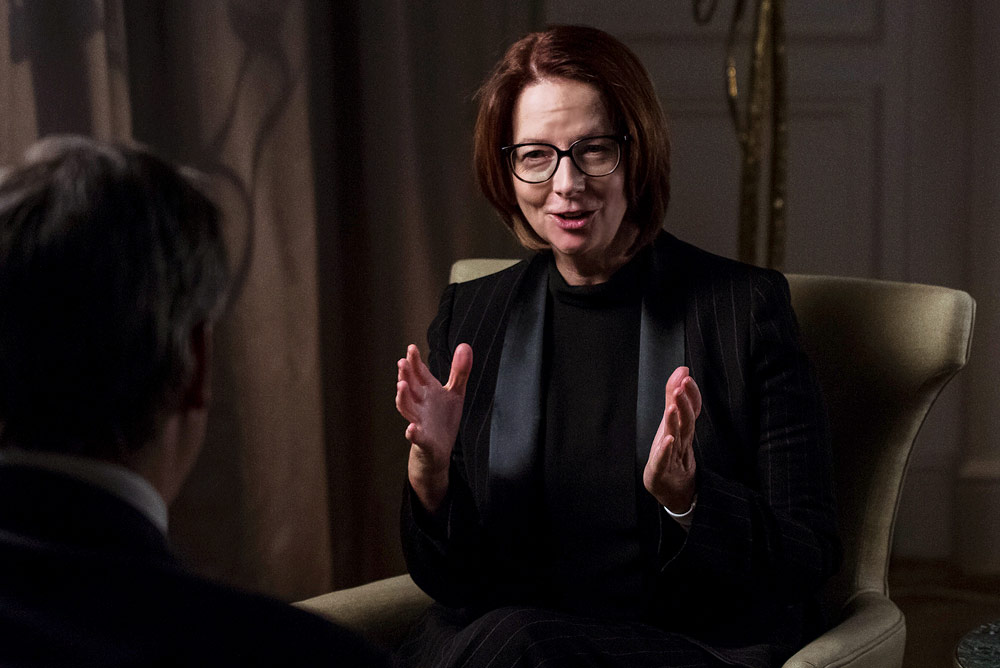It is a wonderful gift to walk into a classroom and see children learning. As Prime Minister of Australia, and before that as Education Minister, I spent countless days in classrooms reading with children, watching little brows furrow over a difficult mathematical equation and being shown the latest educational website on laptop computers. It was truly a joy to step into each classroom. Ensuring all children in Australia were getting a great education was quickly cemented as my passion and purpose in public life.
In my post politics life, as Chair of the Global Partnership for Education and as a distinguished fellow at the Center for Universal Education at Brookings, I still relish the opportunity to visit classrooms and witness the special magic that takes place when children learn.
Yes, seeing children learning is a wonderful experience. But it is a terrible tragedy when, in some classrooms, I look a little closer and see something else. It might be a textbook gripped tightly, but actually held upside down. The content becomes meaningless – the child is mimicking learning. Or it might be a sum scrawled on the chalkboard by a well-meaning teacher, where the answer prescribed is actually incorrect. I have once cringed as a child was reprimanded in front of me for offering the correct answer to a problem, when it was their teacher who was wrong.
From the very beginning of this century, the countries of the world, under the aegis of the United Nations, have sought to advance education for all children, everywhere. Without education, human development languishes. Indeed, the world has come a long way since it first set Millennium Development Goal 2. This ambitious measure set a target that by 2015, all children would be able to complete a full course of primary schooling.
For the most part, we were successful in meeting this goal. In developing regions, enrolment in primary education reached 91 per cent by 2013, up a staggering 83 per cent from 2000[1]. This saw millions of children enter classrooms, many for the first time. Teachers were trained, buildings were constructed and funds were allocated. But in all of this enthusiasm, and in all of this progress, we missed something so essential: a quality standard that ensured children were actually learning.
Worldwide, 250 million children either do not make it to Grade 4 or do not have basic skills in reading, writing and math by the time they reach Grade 4, and 130 million of these children are in school but not learning. Of course, formal schooling brings many benefits beyond academia. But really, we must ask ourselves: why are they there, what are we doing this for, if not to give children a great education?
The new Sustainable Development Goals (SDGs) seek to address this challenge. SDG target 4.1 specifically states that by 2030, the world must ensure that all girls and boys have free, equitable and quality primary and secondary education leading to relevant and effective learning outcomes. It is an ambitious target, but it is achievable if the world seizes the challenge and invests to meet it.
Sadly, at this point in time, the education sector is failing to garner anywhere near the resources it requires to ensure children everywhere get a great quality education. Donor aid to basic education in developing countries dropped by almost 8% between 2010 and 2013, yet overall development aid increased by more than 8.5% over the same period. UNESCO estimates that there is an annual external financing gap of US$39 billion to provide quality pre-primary, primary and secondary education to all children by 2030.
In September, I joined the International Commission on Financing Global Education Opportunity, a dedicated body charged with bridging the finance gap for global education and ensuring the sustainability of any future funding. Co-convened by Prime Minister Erna Solberg of Norway, President Michelle Bachelet of Chile, President Joko Widodo of Indonesia, President Peter Mutharika of Malawi and the Director-General of UNESCO Irina Bokova, we will explore how better education can foster economic growth, greater health outcomes, and improved global security.
Most importantly, our job is to identify more effective and better-coordinated ways to deploy the resources needed to get children into school and learning. When we break it down, it will cost just $US1.18 a day to educate a child in a developing country. Each and every child is worth that.
This is my purpose now: I want to ensure that whichever classroom I walk into, wherever I am in the world, I will see the great magic of learning take place.
Julia Gillard is the former Prime Minister of Australia, Chair of the Global Partnership for Education and a member of the International Commission on Financing Global Education Opportunities.
[1] UNESCO Institute for Statistics: http://data.uis.unesco.org/Index.aspx?queryid=127

